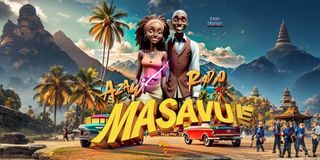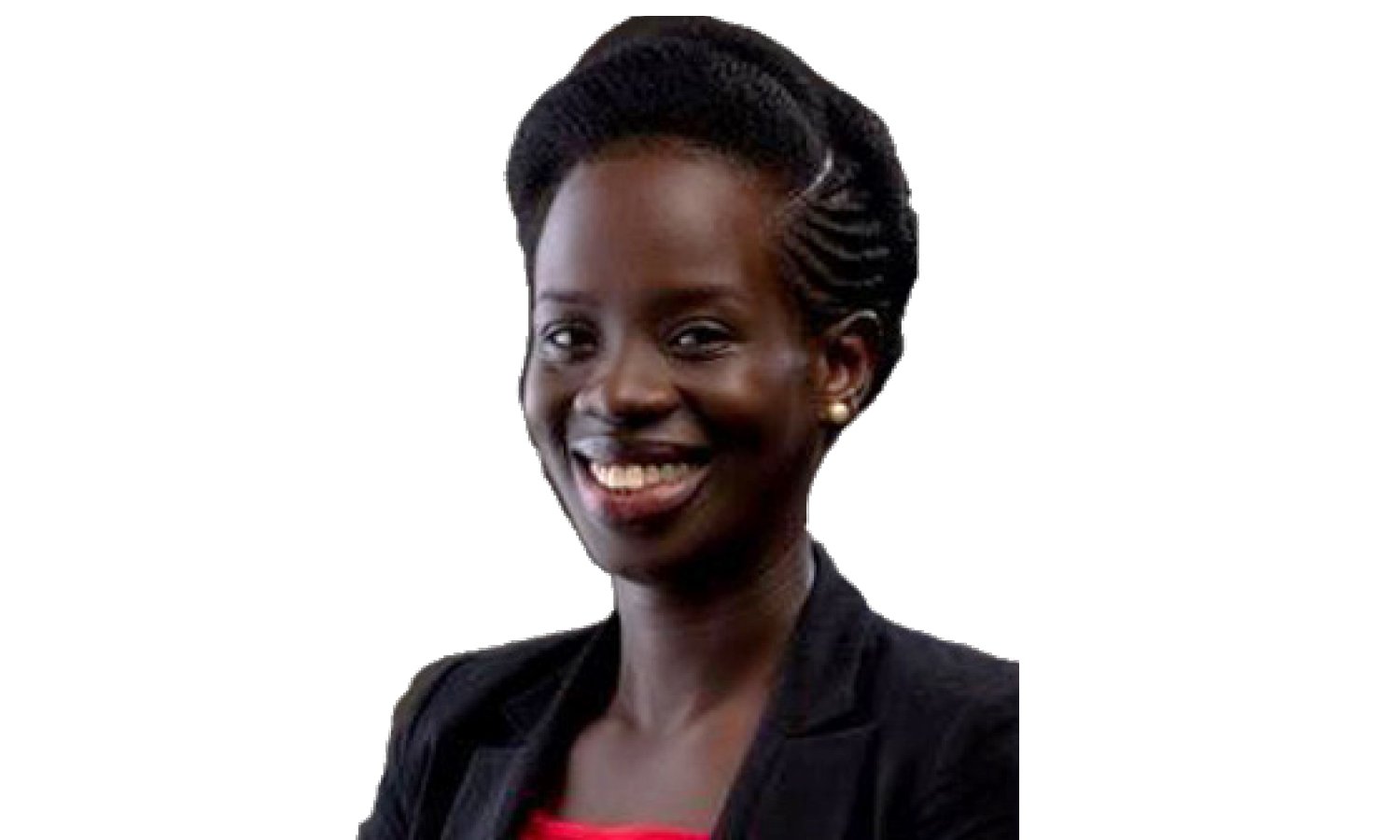Prime
AI: Is Uganda’s music industry under attack?

The AI version of Masavu has received more visibility more than the original song. photo/created by Eyo Shata
What you need to know:
TECHNOLOGY: Artificial intelligence (AI) has advanced to the point where AI systems can be used to create musical works and songs. However, with most listeners already unable to tell the difference between music made by computers and music composed by humans, the trend has sparked mixed reactions from stakeholder with several calling for regulation, writes Gabriel Buule.
Almost a month ago, singer Priscilla Zawedde, better known as Azawi released a new single titled Masavu.
The song was well received by the audience, especially byTikTok users who swiftly jumped onto the sound.
Days later, the unthinkable struck the music industry as the song was again re-shared on TikTok with a voice of Uganda’s fallen music legend, Mozey Radio.
In what seemed to be like a collaboration with the dead, the first verse of the song, perfectly appeared in Radio’s voice.
It turned out that the song was recreated by a TikTok user, Eyo Shata, who reproduced the song using Artificial Intelligence software, also known as AI.
The new song truly mirrors the simulation of human intelligence processes by computer systems to the fact that the system recognised language and sound to make everyone believe that the deceased was literally part of the song.
Actually, a section of creatives and music consumers began to allege that the project could have been one of Radios ‘unfinished works, which Swangz, Azawis’music label, openly disassociated from.
Azawi shared that it might seem funny but it should be treated as copyright infringement against original creators.
She also shared that there should be a particular form of licensing that must be issued to AI users so that there can be much clearer negotiations and guidance between users and original creators.
An innovative human rights media organisation that celebrates diversity and inclusion of all humanity, East Africa Visual Artists, recently shared a concern on their X handle that AI has expanded the space and limits of creativity, but it has also blurred the lines in terms of copyright.
The use of AI in the music industry has raised concerns about the ownership of intellectual property. One area of concern is the use of an artiste’s voice to create a new song.
Earlier in 2023, Heart on My Sleeve, a song purportedly by Drake and The Weeknd was uploaded on TikTok and Spotify.
It later turned out that the song that received excellent reviews among hip hop fans, was never made by the said musicians.
AI vs Copyright
According to the Copyright and Neighboring Rights Act of 2006, a copyright in a literary, musical or artistic work shall be the exclusive right to control the doing in Uganda or any other country.
However, when one artiste’s voice is used to remix another artiste’s song, it can be challenging to determine who owns the copyright and who benefits from the new creation.
It further frustrates creatives to the fact that a section of music consumers find it hard to differentiate between AI-generated and human-generated voices.
It is understood that AI-generated videos on YouTube can be monetised. However, a creator’s video must provide value to viewers and follow YouTube’s guidelines around originality, creativity and transparency in AI use.
Furthermore, it is upon users to request removal of fake AI videos and YouTube can use AI to detect policy-violating content.
In an unfortunate event, Azawi’s original Masavu song has accumulated less traction on various streaming services as compared to the AI replica.
This means that if the replica AI version is to be monetised, the person who infringed on Azawi’s Masavu copyright will be in position to earn more from streams, hence disenfranchising Azawi who is the original creator.
Apparently, the original version of the song has garnered 206K views and trending number four in Uganda while the replica AI version which was uploaded on YouTube has accumulated 524K views in two weeks, which is almost double the figure for the original.
Intellectual property lawyer, Kenneth Muhangi, shares that if you use someone’s image and likeness in AI works, you can be sued for infringement.
He, however, notes that even though image rights are not catered for in the copyright law, victims can use the common law to argue their case.
He also adds that in case of those that use voices and images of the dead, those with letters of probate or administration can ask court to determine if a work created by AI can be added to the existing inventory.
He, however, guides that moving forward, a regulation is needed by being alive to new developments.
For the case of streaming services that allow AI users who infringe on creators’ works, Muhangi says an original creator can sue a platform for enabling infringement.
An article on Vi Control .net, a platform for musicians, indicates that Copyright Office’s rule is that music generated entirely by AI cannot be copyrighted.
In May 2023, Harvard Law expert Louis Tompros explained that AI-generated art does not qualify for copyright protection but it nonetheless ‘materially affects’ the music industry.
A number of AI systems designed to make music are capable of truly creating a brand new song or remix an existing one.
AI tools can futher make adjustments to existing soundscapes or beats, but that may result in music that sounds similar to songs produced by other users of those systems.
Arts bodies speak out
Daniel Kazibwe, alias Ragga Dee, the chairperson of National Cultural Forum, the apex body for arts shares that the creative industry is feeling the discomfort of AI.
He explains that as creatives push for the copyright act amendment, there is a plan to tame AI by setting up clear guidelines.
“Manipulating someone’s voice, work even when the person is dead, should be regarded as copyright infringement,” he says.
Ragga Dee notes that complaints have been raised by creatives that some AI users have developed a tendency of ripping off from original creators by monetising manipulated works on streaming services.
He adds that whereas sometimes it can be a tool to promote content, use of AI will be used to disenfranchise original creators.
He notes that AI raises significant concerns regarding creativity and copyright protection.
“Sometimes it demonstrates innovation and artistic expression but it blurs the boundaries of ownership and raises questions about the rights of original creators.”
Ragga Dee says much as the creative industry should not suffocate the budding digital landscape, there is need to craft a clear guideline that works in the interest of copyright.
What exactly is AI?
Tech target explains artificial intelligence as the simulation of human intelligence processes by machines, especially computer systems.
Specific applications of AI include expert systems, natural language processing and speech recognition and machine vision.
It is also understood that no single programming language is synonymous with AI, but Python, R, Java, C++ and Julia have features popular with AI developers.
Two systems that are, in fact, able to create new music are Google’s MusicLM and Jukebox, made by ChatGPT creator OpenAI.
REDEFINING MUSIC
AI is redefining creativity in Uganda’s creative sector. Creators especially on TikTok are using AI to visualise Ugandan music, especially old music.
Most prominent is the song Nabadda, a song created in the 1970s by legendary Kadongo Kamu singer, Gerald Mukasa. The song, which had no video version has been recreated and widely shared on social media.
Recently, Mapoz, a song by Diamond Platnumz was recreated with AI , indicating that it was a collaboration with Ugandan singer Alien Skin.
The song, which also has an AI-generated video, has attracted 24K views on streaming platform YouTube.
Creating a song using AI
1. Choose an AI tool: There are several AI tools available for creating music. Some popular ones include Amper Music, AIVA, Google’s Magenta, and OpenAI’s MuseNet. Choose the tool that best suits your needs and preferences.
2. Generate melodies or chord progressions: Start by generating melodies or chord progressions using the AI tool. You can input parameters such as mood, tempo and style to guide the AI in creating the music according to your preferences.
3. Experiment: Once you have generated some musical elements, experiment with different combinations and variations to find what resonates with you. AI tools often allow you to tweak parameters and generate multiple options to choose from.
4. Add lyrics: If you want to include lyrics in your song, you can either write them yourself or use AI-generated lyrics. There are AI tools available that can generate lyrics based on a given theme or input.
5. Arrange the song structure: Arrange the generated musical elements into a cohesive song structure. This typically includes sections such as verses, choruses, bridges, and outros. You can use traditional songwriting principles or experiment with unconventional structures.
6. Refine and edit: Listen to the song carefully and make any necessary refinements or edits. This might involve adjusting the melody, chords, lyrics, or arrangement to improve the overall quality and coherence of the song.
7. Mixing and mastering: Once you are satisfied with the composition, mix and master the song to ensure that all the elements blend together harmoniously. Pay attention to aspects such as volume levels, panning, EQ, and effects.
8. Finalise and share: Once the mixing and mastering process is complete, finalise the song and prepare it for sharing or distribution. You can release it on music streaming platforms, share it on social media, or use it for personal projects.
9. Feedback and iteration: Gather feedback from listeners and collaborators and use it to iterate and improve your AI-generated songs. This iterative process can help you refine your skills and create even better music in the future.
Source: ChatGPT
Photo: AI generated




